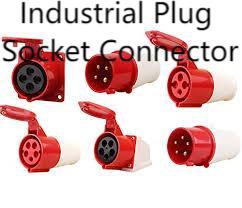Nante Industrial Plug Socket Connector Reliability Engineered

In complex industrial systems, specifying the right Industrial Plug Socket Connector early avoids compatibility problems and costly downtime, and choosing a certified Industrial Plug Socket Connector ensures safe connections, repeatable mating cycles, and predictable maintenance for heavy-duty equipment. Engineers benefit when connector selection aligns with equipment inrush characteristics, protective device coordination, and environmental exposures to create robust, serviceable power interfaces.
Matching Connectors to Application Needs
Begin by mapping the electrical load profile and duty cycle. High-inrush motors, variable-frequency drives, and resistive heating elements have different transient and steady-state behaviors that affect connector selection. Choose current and voltage ratings that provide headroom under expected peak loads. Consider insulation class, contact geometry, and mating cycles to ensure the connector performs reliably over its intended service life. Compatibility with protective devices—breakers, fuses, and ground-fault systems—must be verified to prevent nuisance trips and ensure coordinated fault clearing.
Mechanical Design and Contact Technology
A high-performance connector balances rugged housings with precision contact metallurgy. Impact-resistant shells protect against physical damage, while keyed couplings prevent mis-mating. Contacts plated with silver or other low-oxidation materials maintain low resistance through many cycles. Look for features such as captive strain relief, reinforced cable entries, and secure locking collars that resist vibration and accidental disconnection. Where frequent mating is expected, select contacts and housings rated for high insertion cycles and with replaceable wear parts to extend usable life.
Environmental Protection and Sealing Strategies — Nante Compatibility and Accessories
Environmental exposure drives sealing choices. For dusty, wet, or corrosive locations, specify IP or NEMA ratings that reflect real site conditions. Effective sealing includes robust gaskets, proper gland selection, and sealed mating interfaces that maintain protection once cables are installed. Accessory ecosystems—mounting frames, blanking plates, and sealing collars—simplify field fitment and upgrades. Using approved accessories preserves the connector’s protective rating during maintenance or reconfiguration, reducing the risk of water ingress or particle contamination.
Installation Best Practices and Commissioning Tests
Proper installation prevents many field failures. Use manufacturer-recommended torque values for terminations and calibrated tools to avoid under- or over-tightening. Installers should follow specified conductor preparations—correct stripping lengths and crimping methods—to minimize contact resistance. After wiring, perform contact-resistance measurements and thermal imaging during a controlled run to detect early hotspots. Mating-cycle verification checks help identify mechanical wear or alignment issues before operators rely on the connector in live service.
Lifecycle Management and Procurement Strategy
Long-term reliability depends on lifecycle planning. Standardize on connector families across sites to simplify spares inventory and training. Maintain a stock of replacement seals, mating plugs, and common spare contacts to expedite repairs. When procuring, evaluate suppliers for test reports, cycle-life data, and accessible documentation. Consider total cost of ownership: connectors that are easier to service and include replaceable parts often reduce downtime costs compared to cheaper, sealed-for-life alternatives.
Safety Features and Integration with Controls
Modern connectors can include auxiliary and safety contacts that interface with control systems, enabling interlocks, status monitoring, or pre-mate sensing. These features improve operational safety by ensuring that systems cannot be energized while maintenance is in progress. For hot-pluggable equipment, staged-contact designs reduce arcing and allow safer engagement. Ensure that any integrated features are compatible with existing control logic and protective relays to avoid unexpected interactions.
Choosing the right connector family improves uptime, simplifies maintenance, and enhances operator safety in demanding industrial environments. Prioritize mechanical robustness, appropriate sealing, precise contact technology, and a supplier ecosystem that supports installation and spares. For a detailed technical overview and specification guidance on industrial connection systems, consult the industry resource at https://www.nante.com/news/industry-news/what-is-industrial-plug.html
- Art
- Causes
- Crafts
- Dance
- Drinks
- Film
- Fitness
- Food
- Spellen
- Gardening
- Health
- Home
- Literature
- Music
- Networking
- Other
- Party
- Religion
- Shopping
- Sports
- Theater
- Wellness
